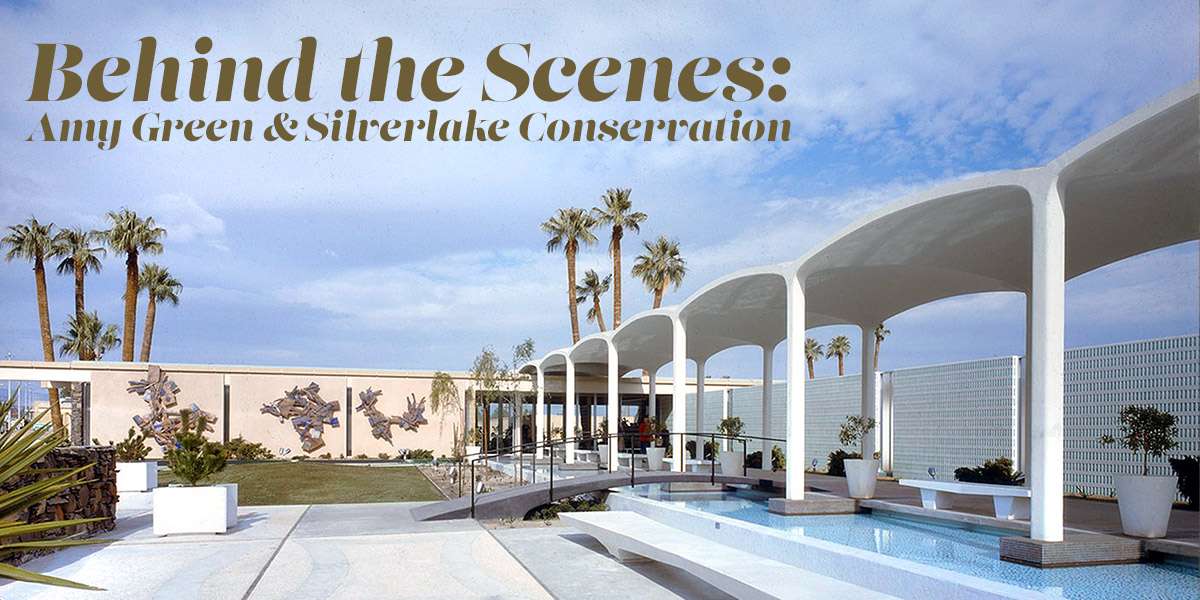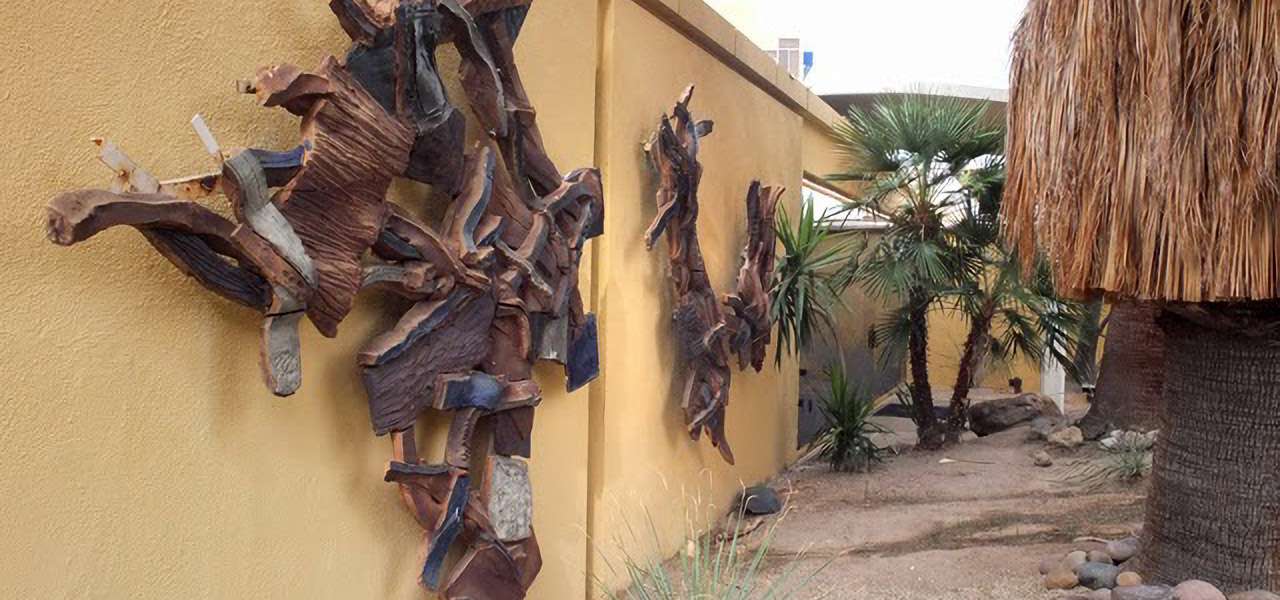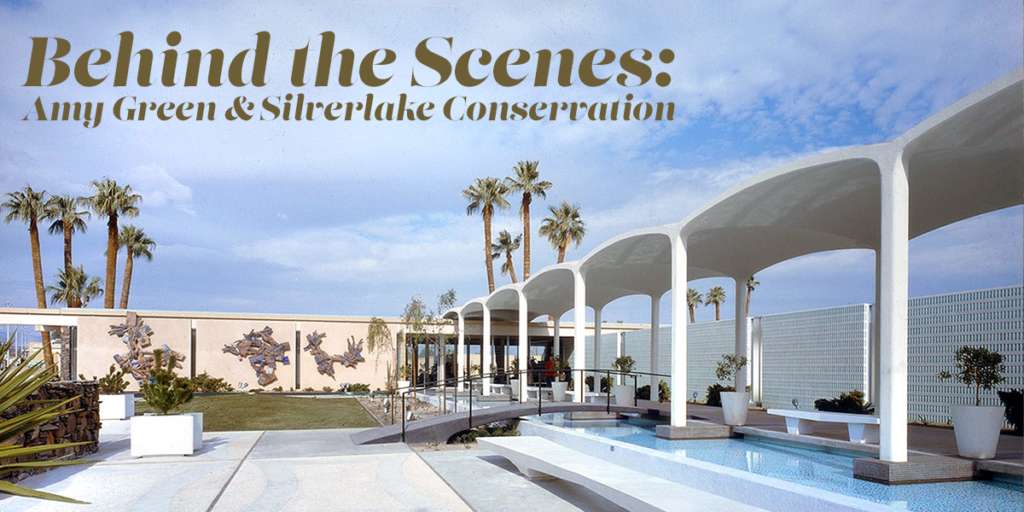
Behind the Scenes: Amy Green & Silverlake Conservation
Sunday, October 24, 2021 • 11 AM (Pacific) • In Person
You are invited to join host and President of AMOCA’s Board of Directors Alex Ehrlich, AMOCA Executive Director Beth Ann Gerstein, and AMOCA friends and donors for a special engagement at the offices of Amy Green and Silverlake Conservation. Green will lead a behind the scenes tour and discuss the process by which ceramic works of art are conserved for future generations.
Green, a longtime friend of AMOCA, is currently conserving the wall-mounted sculpture by John Mason pictured above, which was acquired by AMOCA in 2017 as a gift from the Agua Caliente Band of Cahuilla Indians. The sculpture, when completed, will feature prominently in the renovated Education Hall (renders can be viewed on the renovation campaign webpage, or by clicking here).
Green has a broad range of experience in the conservation of a variety of materials including ceramics, glass, metal, stone, concrete, and modern materials. In Southern California, she has worked on projects at Dodger Stadium, the Griffith Observatory, the Wilshire Boulevard Temple, the Japanese American National Museum, and the Broad Art Foundation. Green holds a certificate in Historic Preservation from the University of Southern California, an MA in Tile Conservation from Antioch University, and a BA degree from the University of Michigan.
You can RSVP for this special event using the link below, or by emailing membership@amoca.org. This event is complimentary for Circle Members.
Event RSVP
RSVP using the form below (it may take a moment to load). If you have any questions, or prefer to RSVP another way, contact the membership team by email at membership@amoca.org or by phone at (909) 865-3146.
About the Artwork

Pictured: John Mason (American, 1927-2019), untitled (wall sculpture – detail), c.1959. Gift of the Agua Caliente Band of Cahuilla Indians. Photo: Esotouric.
In the February, 1963 edition of ArtForum, Paul M. Laporte writes that “this [was the] first public commission the young artist [John Mason] received.” He goes on to describe the sculpture:
It is in three sections, each made up of many strips of clay, long and short, thick and thin, broad and narrow, square and round, connected and interwoven with each other as well as with a number of square slabs of different sizes. The weaving is free-wheeling and spontaneous. The surfaces show punctuations, lacerations and a variety of other textures. Glazed areas of bright blue, grey, black and various shades of dull-metallic reddish brown appear in the midst of the natural color of the baked clay. The sections are set off against the wall about 6 inches in distance (a major engineering task in welded steel): Under the strong sun of California they throw almost linear shadows, making the most of the various open areas left between the interwoven strips. The three sections resemble the feathery burst of activity on top of the very tall palm trees behind the building, and their colors are in tune with the surrounding landscape.
Photos of the original article can be found here and here.
The building for which the artwork was commissioned, the Palm Springs Spa, opened in 1960. It went on to become an icon of mid-century architecture, and was highlighted on page 108 of the recent book “Master of the Midcentury: The Architecture of William F. Cody,” co-authored by AMOCA’s Adjunct Curator Jo Lauria:
Banowit formed Palm Springs Spa, Inc. to develop the project, planning it in two phases. Phase 1 included the Palm Springs Spa, and phase 2 the Palm Springs Spa Hotel. For the first phase, duties were divided among a team composed of Cody, the firm of Wexler & Harrison, and Koenig. Cody was the design architect, while Wexler and Harrison served as the executive architects and Koenig the project architect. John Vogley of Cody’s San Francisco office was the landscape architect, and Maurice Martiné the interior designer.



The building was torn down in 2014. Photographs of the building before its demolition, including photographs of the installed sculpture, have been documented by our friends at Esotouric.
